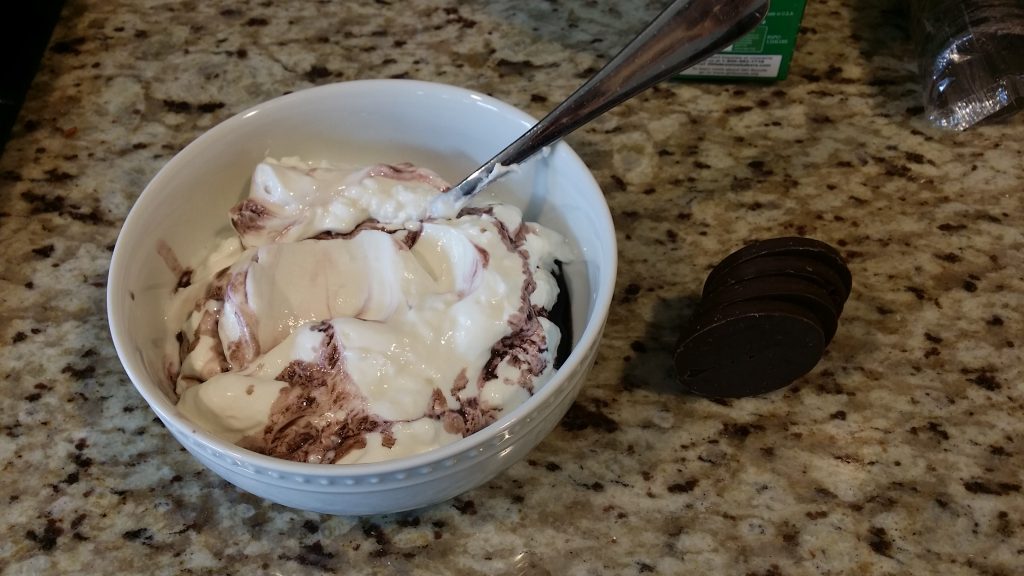A Lesson in Energy Density and Palatability
A lesson in energy density and palatability.
The bowl on the left is 1.5 cups (338 grams) of non-fat Greek yogurt, mixed with some non-caloric flavoring.
Total calories: 210
Energy density: 0.6 calories per gram
On the right are 4 girl scout cookies (32 grams)
Total calories: 160
Energy density: 5 calories per gram
Can the cookies make us fat through an effect on insulin? No. In fact, the yogurt is probably more insulinemic, as dairy foods stimulate more insulin than many high sugar foods.
There are no magical fattening effects of cookies. However, cookies represent a different challenge...it's much easier to overeat them. Rather than just eating 4, you're likely to eat 8 or 12 and well exceed the calorie intake of the yogurt. The cookies are not as filling because they have a synergistic combination of high energy density (more calories per gram), palatability, and low protein compared to the yogurt.
Palatability is big...I probably wouldn't eat as much of the yogurt if I didn't mix the flavoring in with it.
In fact, a classic 1995 study showed that some of the biggest predictors of how filling a food could be were its palatability, protein content, and energy density.
https://www.ncbi.nlm.nih.gov/pubmed/7498104
No food is inherently fattening. Some are just easier to overeat than others.

